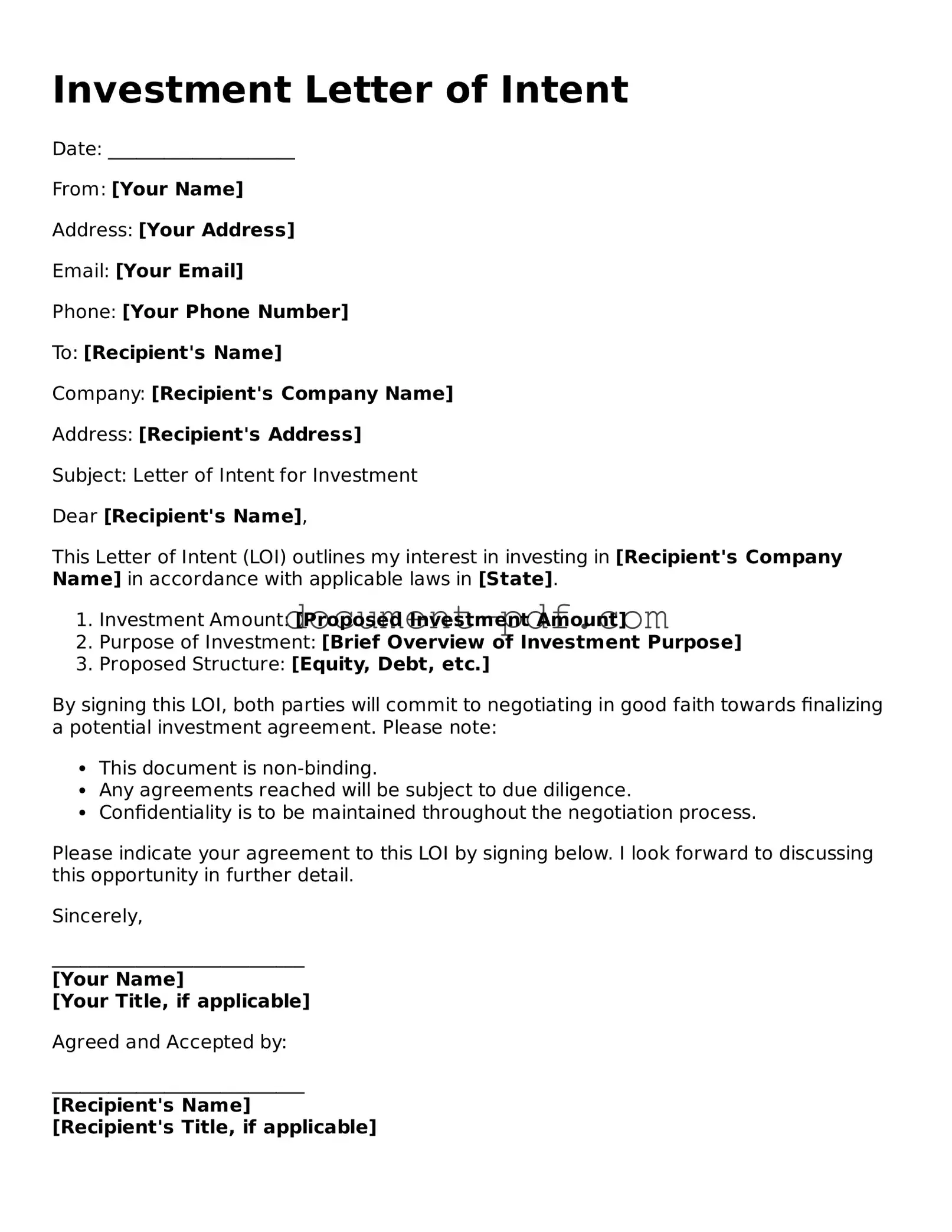The Term Sheet is a key document that outlines the basic terms and conditions of an investment. Similar to the Investment Letter of Intent, it serves as a preliminary agreement between parties. Both documents summarize essential details such as investment amount, valuation, and ownership structure. However, the Term Sheet is often more detailed and serves as a foundation for drafting formal agreements later on.
The Memorandum of Understanding (MOU) is another document that shares similarities with the Investment Letter of Intent. An MOU outlines the intentions of two or more parties to collaborate or engage in a business venture. Like the Investment Letter of Intent, it establishes a framework for future agreements but is generally less formal and may not be legally binding.
The Purchase Agreement is a legally binding contract that details the terms of a sale. While the Investment Letter of Intent expresses interest in investing, the Purchase Agreement finalizes the transaction. Both documents specify critical details, but the Purchase Agreement includes more comprehensive legal obligations and conditions for closing the deal.
The Non-Disclosure Agreement (NDA) is crucial for protecting sensitive information shared during negotiations. While the Investment Letter of Intent may hint at the sharing of proprietary information, an NDA explicitly prohibits disclosure. Both documents aim to facilitate trust and open communication between parties during discussions.
The Shareholder Agreement governs the relationship between shareholders in a company. Similar to the Investment Letter of Intent, it outlines rights, responsibilities, and expectations among investors. However, the Shareholder Agreement is more detailed and legally binding, addressing issues like voting rights and dividend distribution.
The Letter of Commitment is often used to confirm a party's intention to proceed with an investment. This document, like the Investment Letter of Intent, signals a serious interest in moving forward. However, the Letter of Commitment may include specific conditions that must be met before finalizing the investment.
The Subscription Agreement is a document that investors sign to purchase shares in a company. It is similar to the Investment Letter of Intent in that it outlines the terms of the investment. However, the Subscription Agreement is a formal contract that binds the investor to the purchase, while the Investment Letter of Intent is typically non-binding.
The Due Diligence Checklist is a tool used to evaluate a potential investment. While it is not a formal agreement, it serves a similar purpose to the Investment Letter of Intent by laying out the necessary steps and considerations before finalizing an investment. Both documents aim to ensure that parties are informed and prepared for the transaction.
The Investment Agreement is a comprehensive document that formalizes the terms of an investment. It is similar to the Investment Letter of Intent in that both outline the expectations and commitments of the parties involved. However, the Investment Agreement is legally binding and includes detailed provisions that govern the investment relationship.
The Business Plan is a strategic document that outlines the goals and operational plans of a business. While it does not serve as an agreement like the Investment Letter of Intent, it provides essential context for potential investors. Both documents aim to align the interests of the parties involved, but the Business Plan focuses more on the operational aspects of the investment opportunity.
